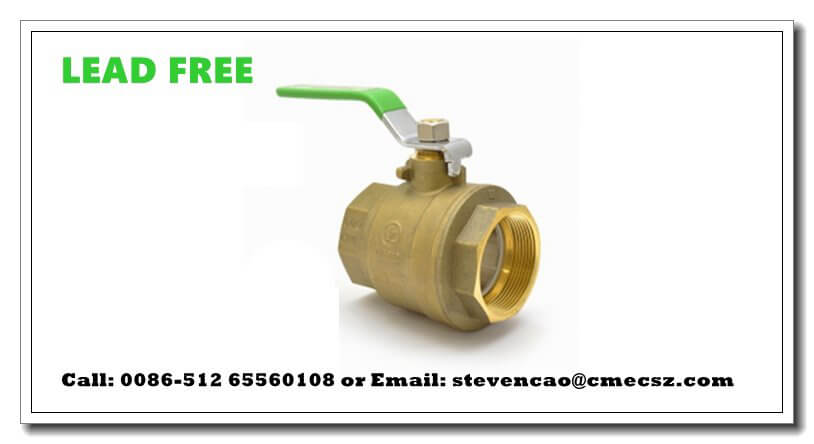© 2018 CMEC AQUA Valve Manufacturing Co.,LTD. All rights reserved. Site Map Link Designed by iwonder.cn

What is lead free brass ball valve? Aqua valve unveiled a line of lead free brass ball valve for customers a few years ago. Valve products contain lead, what is lead? What effects it has? I thought this would be a good time to go over what exactly ”lead-free” means and why it’s important to have a lead-free brass option.
Over the past few years, Valve contains lead which are not allowed by Federal Law to be installed for potable water use in the U.S.A. and its territories. Federal and state governments have enacted laws to limit people’s exposure to chemicals in potable water.
The most sweeping of these laws was an amendment to the Federal Safe Drinking Water Act, redefining “lead-free” as a maximum weighted lead content of 0.25% on the wetted surface of plumbing products. Before that 2011 amendment, the legal limit was 8%.
Section 1417 of the act makes it illegal to “introduce into commerce any pipe, or any pipe or plumbing fitting or fixture that is not lead free, except for a pipe that is used in manufacturing or industrial processing.”
In other words, leaded pipes, fittings and valves can only be used in processes that don’t involve contact with food, drink or any other form of bodily intake.
The federal legislation went into effect Jan. 4, 2014. In addition, many states have introduced lead-free laws, including California, Maryland, Vermont and Louisiana.
Although the legislation does not specifically target them, the new regulations have the most dramatic impact on brass and bronze pipes, fittings, and fixtures which deliver potable (read “drinkable”) water. That is because lead has long been used in the foundry process to make brass castings pressure tight. Lead is sometimes added in concentrations of about 2%.
Because lead is the last element in brass to solidify, it would seep into the smallest holes left in the brass, causing the material to stiffen it up better.
Most of the lead winds up on the surface and can be smeared during the machining process. If that happens, the amount of exposed lead and the potential for lead leaching increases greatly, even in brass parts of relatively low lead content.
Lead-free brass replaces the lead with silicon, bismuth or mixed copper alloys, which help address those issues.
Aqua valve’s lead-free ball valves use silicon brass C87600, which gives them good machinability and pressure tightness. As far as appearance goes, there is no appreciable difference between the lead-free brass and other brass parts.
It should also be understood that all brass “lead-free” parts may still contain trace amounts of lead, but no more than the 0.25% mandated by the law, so the parts should be labeled clearly to avoid confusion.
The AQUA valve lead-free brass valves have an "LF" marking on the body and come with a plastic tag to identify them as lead free.
Do you understand it? If you are interested in our lead free brass ball valve, do not hesitate to contact us, Aqua valve not only provide you high quality brass valve but also offer you professional after-sales service.